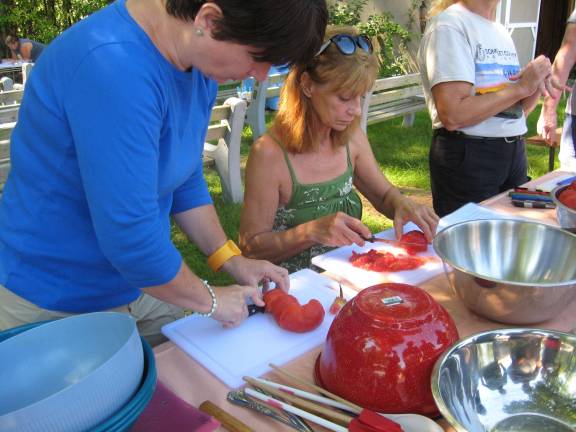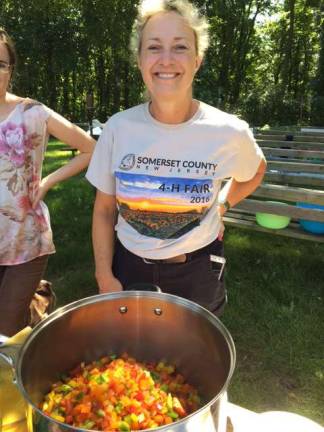You say tomato, I saw 'salsa time'


VERNON — Warm summer breezes lifted the rhythmic sounds of salsa music with cicadas rattling out the beat in every tree. A dozen participants sliced and diced pounds of tomatoes, colorful peppers and pungent onions at an outdoor salsa workshop at Vernon Valley Farm in Vernon, N.J.
Farm co-owner Liz Walker, and Daryl Minch of the Rutgers Cooperative Extension, guided the salsa makers.
“Crops tend to ripen all at once,” said Minch. “Farmers know exactly what to do with overwhelming surplus crops. They freeze and can them for future out of season use.”
With the return of the backyard family garden comes its sister throwback movement: putting up food. Preserving your homegrown food safely takes a bit of knowhow. Incorrect canning methods, like incomplete boiling or not attaining a sufficient acid level, can result in bacteria that causes botulism, which can be fatal.
“Adding lemon or lime juice achieves acidity levels for canning salsa,” Minch said.
Reviewing the Laws of Salsa set down by Jeanne Brandt of the Oregon State University Extension Service, Minch stressed using only high quality vegetables, with amounts called for by the recipe. This is not the time for eyeballing.
“Processing methods need to be held to strictly,” Minch reminded the group. “Creativity stops in canning.”
In the hands-on workshop, participants prepared the canner, washed jars and lids, cut and prepped the ingredients, and cooked the combined ingredients to make the salsa. Then they filled the jars, applied the lids, processed the salsa in the boiling canner which sealed them, and finally took their own jar home to let it cool for half a day.
Health warnings notwithstanding, the rustic feel of the workshop and step by step guidance convinced the majority of the group to attempt the process at home on their own.